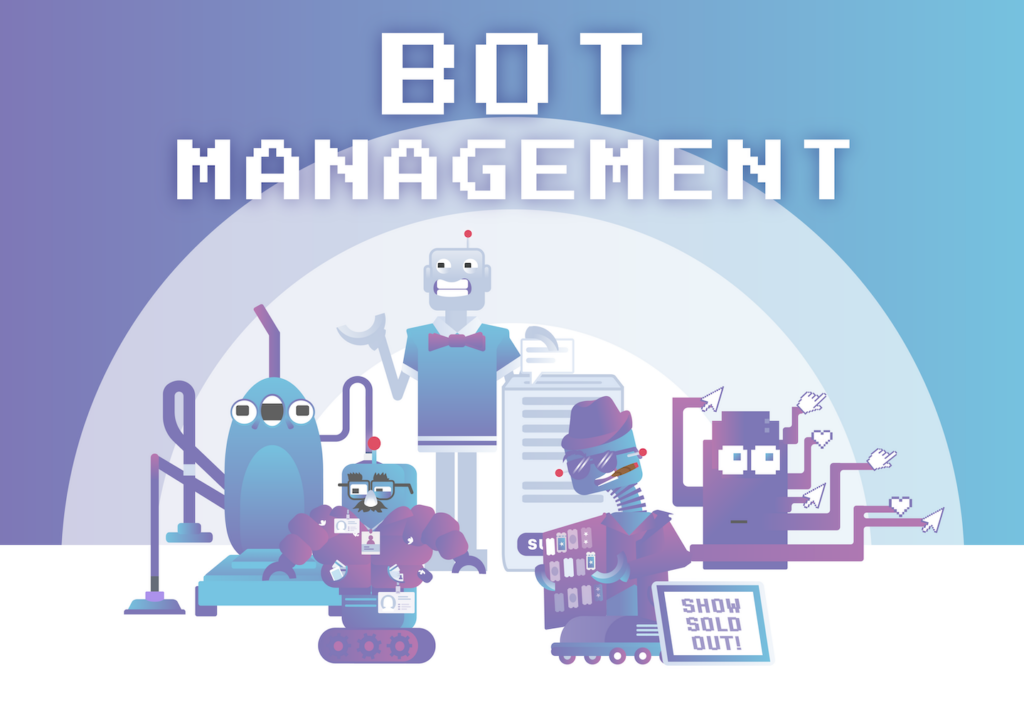Over the last few years, bot activity on the internet has reached new heights, now accounting for over half of all internet traffic. Most of this bot traffic is harmless, and can even be beneficial, as in the case of search engine crawlers indexing your site, for example.
Table of Contents
However, a growing percentage of bot traffic is malicious, and it can negatively impact the performance and security of applications. Software teams must learn how to manage bot traffic effectively so their applications benefit from legitimate bot activity without compromising security and functionality.
This article will discuss the main risks bots pose to applications, and the measures you can take to effectively manage bot traffic.
Types of bot threats to applications
A large volume of bot activity can impact an application in several ways. First, it can skew important metrics that technical or even marketing teams use to gather decision-making data and optimize the application.
But there are also real cybersecurity risks associated with malicious bots. The most popular example is a distributed denial of service (DDoS) attack, where large botnets overwhelm the application with traffic, causing disruption or downtime.
Another threat to consider is credential stuffing, where bots are used to automatically insert stolen usernames and passwords into login forms so real attackers can gain unauthorized access to user accounts.
Bots can also be used by competitors to scrape proprietary data like pricing information, product details, or user reviews. So in a way, competitors are getting richer at the expense of your resources.
What if you don’t take any measures?
Managing application traffic is an essential component in ensuring a smooth experience for your users. Since bots account for a significant percentage of that traffic, it would be a mistake to leave them unmonitored.
Doing so will put your application at an increased risk of a security incident or operational disruption, as you won’t know exactly whether the bot traffic you do have is malicious or not.
The attacks that bots can execute, such as credential stuffing and DDoS can have real, long-term impact on your application and its user base, resulting in downtime, compromised user accounts, and ultimately, a loss of trust and interest from your customers.
Simply monitoring bot traffic isn’t enough. That’s why we use the more proactive term “bot management.” It’s about controlling the type of bot traffic you allow, tolerate, or completely block from your application.
Strategies for managing bot traffic

There are many ways you can approach managing bot activity within your application.
First, there are the more traditional methods like CAPTCHA and rate limiting. CAPTCHA challenges app visitors with tests that are easy for humans but difficult for bots, and is still used in many applications. However, this approach negatively impacts user experience, and isn’t as effective as it once was, as bots become more advanced.
Rate limiting is still an essential measure, allowing you control the number of requests a single IP can make within a given timeframe. This type of protection is very useful in case malicious bots attempt to brute force login credentials or overwhelm APIs.
It’s important to have a general overview of all your application’s traffic and log activity so you can identify and respond to unusual spikes in traffic or an unnatural number of failed login attempts. This can be accomplished with a security and information event management (SIEM) system.
Additionally, you could subscribe to a threat intelligence feed that will notify you when there is an uptick in botnet activity so you can implement new rules to block it before it affects your application.
Should you invest in a bot manager?

The growing concern of bot activity on the internet has also given birth to innovative solutions that are specifically tailored for managing bot traffic. These solutions can differentiate between the good bots (search engine crawlers or performance trackers) and the bad ones (credential stuffing bots, DDoS attackers and scrapers).
The bot manager will provide you with all the capabilities mentioned above, all within a single, easy to use platform.
Whether you decide to implement the capabilities yourself or use a bot manager depends on the level of protection your application requires, and the resources you have available. Managing bot traffic in-house gives you more control in theory, but using a specialized bot manager will likely prove to be a more efficient and reliable solution in practice.
If you’re on the fence, most bot managers offer a free trial, so you can test it out before committing any further.
Conclusion
Bot activity has a real impact on applications. Whether most of the impact is positive or negative depends on how effectively you manage and mitigate malicious bot traffic.
There are several approaches to managing bot traffic. If you want to prioritize user experience, you can refrain from implementing CAPTCHA, but you absolutely should apply alternative methods like rate limiting and traffic monitoring. Advanced bot protection solutions are also a worthy investment.

Ananya Prisha is an enterprise level Agile coach working out of Hyderabad (India) and also founder of High Level PM Consultancy. Her goal has been to keep on learning and at the same time give back to the community that has given her so much.
















A very useful article and source for learning such high-quality information! I appreciate you sharing this useful information.